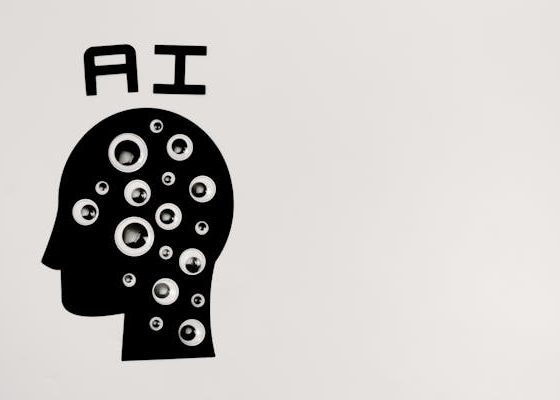
Voice-activated technology, often referred to as voice recognition or speech recognition technology, has transformed the way we interact with devices and access information. This technology enables devices to recognize and respond to human speech, making it possible for users to control gadgets and access services through voice commands. The applications of voice-activated technology span various industries, enhancing convenience, efficiency, and accessibility. In this article, we will explore the evolution of voice-activated technology, its core components, and the myriad applications that are reshaping our daily lives and various sectors.
The Evolution of Voice-Activated Technology
Voice-activated technology has a long history that dates back to the mid-20th century. The earliest speech recognition systems were limited in their capabilities, often requiring users to speak slowly and clearly into a microphone. These systems relied on simple algorithms to recognize a small vocabulary of words. Over the decades, advances in artificial intelligence (AI) and machine learning (ML) have significantly improved the accuracy and functionality of voice recognition systems.
One of the most significant milestones in the evolution of voice-activated technology was the development of the Hidden Markov Model (HMM) in the 1970s. This mathematical model enabled systems to handle variations in speech patterns, accents, and intonations. In the 1990s, the introduction of large-vocabulary continuous speech recognition systems marked another leap forward, allowing users to speak naturally and at a normal pace.
The advent of deep learning in the 2010s revolutionized voice-activated technology. Deep neural networks, particularly convolutional neural networks (CNNs) and recurrent neural networks (RNNs), enabled systems to achieve near-human levels of speech recognition accuracy. These advancements paved the way for the development of virtual assistants like Apple’s Siri, Amazon’s Alexa, Google Assistant, and Microsoft’s Cortana, which have become integral parts of many people’s daily lives.
Core Components of Voice-Activated Technology
Voice-activated technology comprises several core components that work together to convert spoken language into actionable commands. These components include:
- Automatic Speech Recognition (ASR): ASR is the technology that converts spoken words into text. It involves several sub-processes, including feature extraction, acoustic modeling, language modeling, and decoding. ASR systems use deep learning algorithms to analyze the acoustic features of speech and match them to corresponding phonetic units.
- Natural Language Processing (NLP): Once the spoken words are transcribed into text, NLP algorithms interpret the meaning of the text. NLP involves understanding the syntax, semantics, and context of the spoken language to determine the user’s intent. This step is crucial for accurately responding to user queries and commands.
- Text-to-Speech (TTS): TTS technology converts written text into spoken language. This component is essential for providing vocal responses to users. TTS systems use various techniques, including concatenative synthesis and neural network-based synthesis, to generate natural-sounding speech.
- Speech Synthesis Markup Language (SSML): SSML is a markup language used to control the prosody, pitch, and intonation of synthesized speech. It allows developers to fine-tune the vocal output of voice-activated systems, making them sound more natural and engaging.
- Voice Biometrics: Voice biometrics is a security feature that uses unique vocal characteristics to verify a user’s identity. This component enhances the security of voice-activated systems, preventing unauthorized access to sensitive information or services.
Applications of Voice-Activated Technology
The applications of voice-activated technology are vast and diverse, impacting various aspects of our lives and industries. Below are some key areas where this technology is making a significant impact:
1. Smart Home Automation
Voice-activated technology has become a cornerstone of smart home automation. Virtual assistants like Amazon Alexa, Google Assistant, and Apple’s Siri allow users to control various smart devices using voice commands. This includes adjusting thermostat settings, turning lights on and off, controlling smart appliances, and managing home security systems.
For example, a user can say, “Alexa, set the thermostat to 72 degrees,” and the smart thermostat will adjust the temperature accordingly. This level of convenience enhances the user experience and provides greater control over home environments.
2. Healthcare and Medical Applications
In the healthcare sector, voice-activated technology is being used to streamline operations and improve patient care. Voice recognition systems can assist medical professionals in transcribing patient notes, scheduling appointments, and accessing medical records. This reduces the administrative burden on healthcare providers and allows them to focus more on patient care.
Additionally, voice-activated technology is being integrated into telemedicine platforms, enabling remote consultations between doctors and patients. Patients can describe their symptoms using voice, and doctors can provide diagnoses and treatment recommendations. This is particularly valuable for patients in rural or underserved areas with limited access to healthcare services.
3. Automotive Industry
The automotive industry has embraced voice-activated technology to enhance the driving experience and improve safety. Voice-activated systems in vehicles allow drivers to control infotainment systems, make phone calls, and access navigation without taking their hands off the wheel. This hands-free functionality reduces distractions and helps drivers stay focused on the road.
In-car virtual assistants, such as Apple’s CarPlay and Google’s Android Auto, provide drivers with access to a wide range of services, including music streaming, weather updates, and real-time traffic information. As autonomous driving technology advances, voice-activated systems will play a crucial role in communicating with self-driving vehicles.
4. Customer Service and Call Centers
Voice-activated technology is transforming customer service and call center operations. Many companies use automated voice recognition systems to handle customer inquiries, process transactions, and provide information. These systems can understand and respond to natural language queries, making interactions more efficient and user-friendly.
For example, a customer can call a bank’s automated system and say, “Check my account balance,” and the system will provide the requested information. This reduces wait times and allows customers to access services 24/7 without needing to speak with a human agent.
5. Education and E-Learning
In the education sector, voice-activated technology is being used to enhance the learning experience. Voice recognition systems can transcribe lectures and create searchable transcripts, making it easier for students to review course material. Additionally, voice-activated virtual assistants can help students with homework, answer questions, and provide explanations for complex concepts.
Language learning applications, such as Duolingo, use voice-activated technology to help users practice pronunciation and improve their speaking skills. This interactive approach makes language learning more engaging and effective.
6. Accessibility for People with Disabilities
Voice-activated technology has made significant strides in improving accessibility for people with disabilities. For individuals with mobility impairments, voice recognition systems provide a hands-free way to control devices and access information. This technology can be used to operate wheelchairs, control home automation systems, and navigate digital interfaces.
For people with visual impairments, voice-activated technology offers an alternative to screen-based interactions. Virtual assistants can read out text, describe images, and provide auditory feedback. This enhances the independence and quality of life for individuals with disabilities.
7. Entertainment and Media
Voice-activated technology has become a popular feature in entertainment and media applications. Smart speakers, such as Amazon Echo and Google Home, allow users to play music, listen to audiobooks, and stream podcasts using voice commands. Users can also ask for news updates, sports scores, and weather forecasts, making these devices versatile entertainment hubs.
In the gaming industry, voice-activated technology is being integrated into video games to create more immersive experiences. Players can use voice commands to interact with characters, control game actions, and navigate menus. This adds a new dimension to gaming and enhances player engagement.
8. Retail and E-Commerce
The retail and e-commerce sectors are leveraging voice-activated technology to enhance the shopping experience. Voice-activated virtual assistants can help customers find products, compare prices, and place orders. For example, a user can say, “Order a pair of running shoes,” and the virtual assistant will provide a list of options and facilitate the purchase.
Retailers are also using voice recognition technology to analyze customer feedback and reviews. By understanding customer sentiments and preferences, businesses can improve their products and services to better meet consumer needs.
9. Financial Services
Voice-activated technology is being adopted in the financial services industry for various applications, including banking and investment management. Voice recognition systems can authenticate users, provide account information, and execute financial transactions. This enhances the convenience and security of financial services.
For instance, a user can use a voice command to transfer money between accounts, check account balances, or pay bills. Financial institutions are also exploring the use of voice biometrics for secure authentication, reducing the risk of fraud and identity theft.
10. Business and Office Automation
In business settings, voice-activated technology is being used to streamline office tasks and improve productivity. Voice recognition systems can transcribe meetings, set reminders, and manage calendars. Virtual assistants can also help with tasks such as sending emails, making phone calls, and conducting internet searches.
Voice-activated technology is also being integrated into office equipment, such as printers and photocopiers, allowing users to operate these devices using voice commands. This reduces the need for manual interactions and simplifies workflows.
Challenges and Future Directions
While voice-activated technology has made significant advancements, it still faces several challenges. One of the primary challenges is ensuring accuracy and reliability in diverse environments and across different languages and dialects. Background noise, speech variations, and accents can affect the performance of voice recognition systems. Developers are continually working to improve the robustness of these systems to handle a wide range of conditions.
Privacy and security concerns are also critical considerations in the deployment of voice-activated technology. Voice data can be sensitive, and there is a risk of unauthorized access or data breaches. Implementing strong encryption and secure data storage practices is essential to protect user information.
Looking ahead, the future of voice-activated technology holds exciting possibilities. As AI and machine learning continue to advance, voice recognition systems will become even more accurate and capable. The integration of voice-activated technology with other emerging technologies, such as augmented reality (AR) and virtual reality (VR), will create new and immersive experiences.
In addition, the development of voice-activated AI systems that can understand and respond to emotions and sentiments will enhance human-computer interactions. These systems will be able to detect the tone and mood of a speaker, allowing for more personalized and empathetic responses. This emotional intelligence could revolutionize customer service, healthcare, and even mental health support, where understanding a user’s emotional state is crucial.
Another promising direction is the enhancement of multilingual support. As voice-activated technology becomes more global, the ability to accurately understand and respond to multiple languages and dialects will be critical. Advances in natural language processing and machine translation will make these systems more accessible and useful for people around the world, breaking down language barriers and fostering better communication.
Moreover, the integration of voice-activated technology with wearable devices and Internet of Things (IoT) ecosystems will expand its applications further. Wearable devices equipped with voice recognition can provide users with hands-free control over various functions, such as sending messages, setting reminders, or even calling for assistance in emergency situations. In smart cities, voice-activated systems could interact with public infrastructure, allowing citizens to access information about public transport, city services, and more.
In the business world, voice-activated technology is set to transform workflows and productivity. Voice-activated AI assistants can automate routine tasks, such as data entry, report generation, and scheduling, freeing up time for more strategic activities. They can also provide valuable insights by analyzing large volumes of data through voice queries, making data-driven decision-making more accessible.
Furthermore, the integration of voice-activated technology into consumer electronics, such as televisions, home appliances, and personal gadgets, will continue to grow. This will create seamless and intuitive user experiences, as people can control their devices and access information effortlessly using their voice.
Conclusion
Voice-activated technology has evolved from rudimentary systems with limited capabilities to sophisticated solutions that are transforming various aspects of our lives. The applications of voice-activated technology are vast, ranging from smart home automation and healthcare to automotive, customer service, education, and beyond. This technology offers unparalleled convenience, accessibility, and efficiency, making it an integral part of our daily interactions with technology.
As the technology continues to mature, we can expect to see even more innovative applications and improvements in accuracy, multilingual support, and emotional intelligence. However, addressing challenges related to privacy, security, and environmental factors remains crucial to ensuring the safe and effective deployment of voice-activated systems.
The future of voice-activated technology is bright, with endless possibilities for enhancing human-computer interactions. As AI and machine learning advance, and as the technology becomes more integrated into our everyday lives, we will continue to witness the transformative impact of voice-activated technology across various industries and sectors. Whether it’s making our homes smarter, improving healthcare services, enhancing accessibility, or driving business productivity, voice-activated technology is poised to play a central role in shaping the future of digital interactions.



